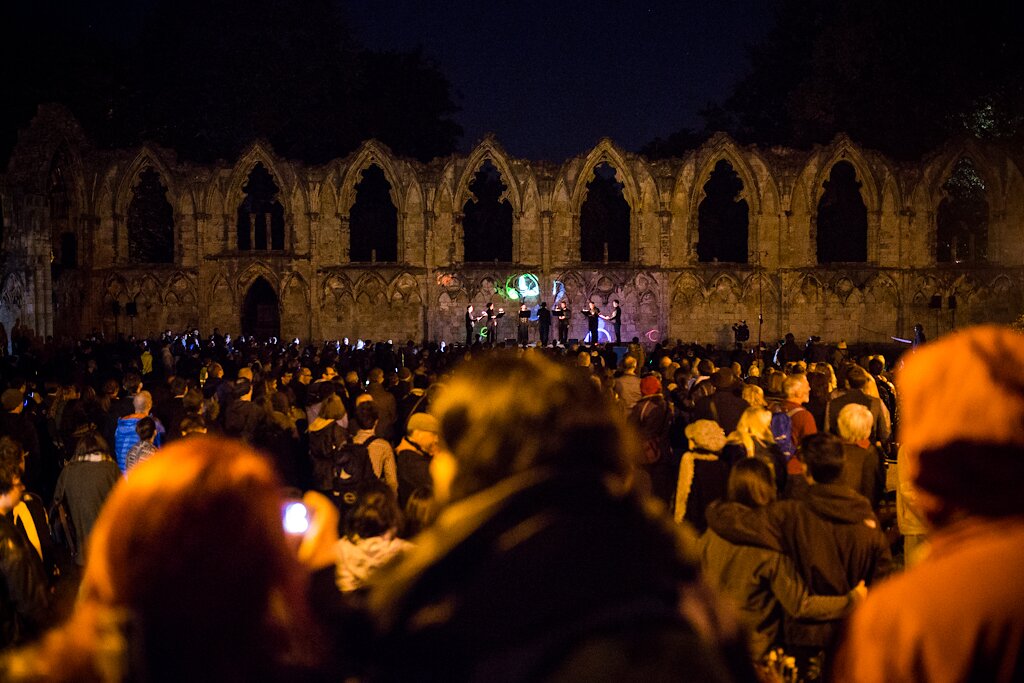20 mins | 2015 | 6-part Choir (SSAATB)
Architexture II was composed for a public augmented reality experience. Over 600 people attended the premier at St. Mary’s York, where we re-constructed the acoustic St Mary’s would have had were it still standing, and performed Architexture II - a vocal work specifically designed to provide an immersive and accurate interaction with with the re-created space.
See this description of the architexture project itself for more information.
Musical Construction
Architexture II, a 20 minute vocal work for six part choir exploits the specific architectural acoustics characteristics of a heritage building which is no longer present today. As this is new music, and not a ‘historical re-construction’, it is possible to bring the public experience closer to the reality of the past in new ways: the composition Architexture II is designed to closely match this physical site. If we had selected generic repertoire from the same period to perform within a simulated acoustic, it would not be possible to fully know that the works really had a tight relationship with the exact building with which we were working, or indeed how choral directors of the day would have articulated them due to the limitations of written documentary evidence from the period and the issue that authentic performance scholarship whilst a valuable resource can not fully capture the actual sounding experience of interacting with a particular space from this period on a detailed and nuanced level. A powerful case for new composition for heritage applications emerges as these relationships can be constructed from the present day in order to present a more rigorously evidenced view of the past.
Spatial Re-construction
The previous section has outlined how new music was constructed to match the acoustic measurements of a historic building. The performance itself was placed in that space using applied audio engineering techniques as follows.
From site measurements and historical architectural materials data, it is possible to construct an impulse response of a venue using commercial available architectural acoustics software, such as Odeon. The acoustics team used an impulse response generated by Stephen Oxnard (Department of Electronics, University of York) as the starting point for an ambisonics realisation. This data is available on the OpenAIR lib impulse response archive site.
In a team lead by Dr Jude Brereton, Live processing was applied in a straightforward manner to each singer’s microphone via convolution - running the REAPER audio production workstation as a live tool, then decoded through an ambisonics loudspeaker array to give the audience a spatially relevant presentation of the music. Given that the music and acoustic are not separate entities in this performance, care was taken to make sure the live sound (including reflections from the existing building) were appropriate to the demands of the score.

Score
The score is available for free, public performance over on github
